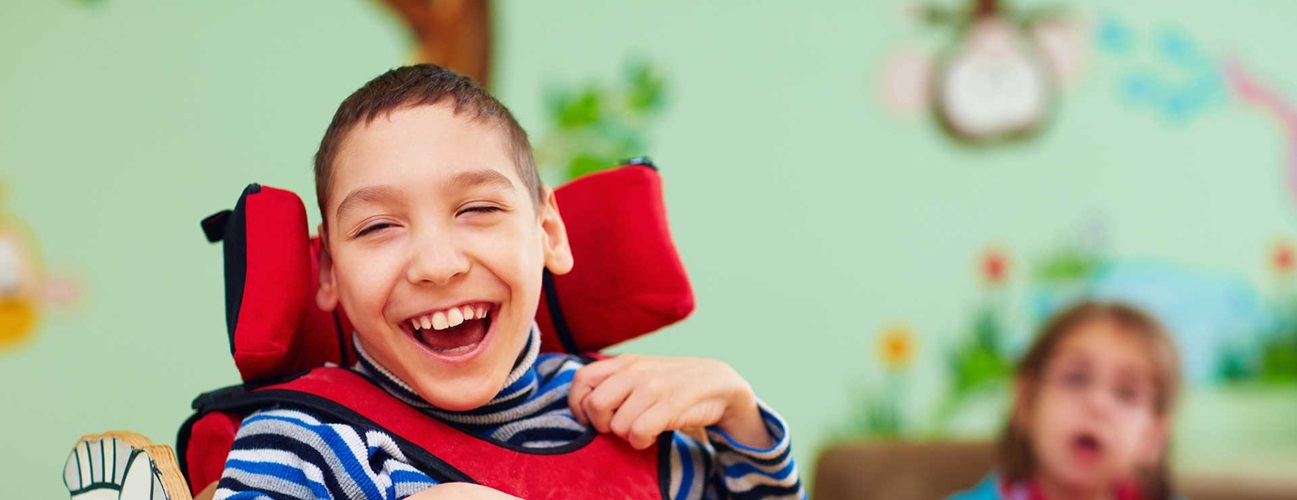


Spasticity is abnormal muscle tightness due to prolonged muscle contraction. It is a symptom associated with damage to the brain, spinal cord or motor nerves, and is seen in individuals with neurological conditions, such as:
Spasticity can affect muscles in any part of the body, but is most common in leg muscles. Symptoms can vary among individuals and can be painful, disfiguring and disabling.
Voluntary movement involves a series of communications between muscles and the brain, with signals transmitted through the nerves and spinal cord. Congenital conditions or other factors affecting a particular area of the brain, spinal cord or nerves can affect the flow of signals to and from the muscles.
Spasticity in people with CP results from damage to the part of the brain that controls muscle tone and movement. Arm and leg muscles may be affected. Children who are eventually diagnosed with cerebral palsy may not show spasticity symptoms as infants, but the problem can become more evident over time as the child matures.

Journee, age 4, was born with cerebral palsy. She and her mother traveled from Boston to meet pediatric orthopaedic surgeon Ranjit Varghese and neurosurgeon Shenandoah Robinson. Journee's surgeons developed a treatment plan with the rehabilitation team at the Kennedy Krieger Institute to get her standing and walking for the first time.
People with MS can experience spasticity of the leg and hip muscles, resulting in flexor spasticity (legs and hips locked in a bent position) or extensor spasticity, where stiff muscles hold the legs straight and occasionally crossed at the ankles.
Shortly after a traumatic brain injury (TBI), spinal cord injury or stroke, an individual may show signs of muscle tightness in different parts of the body, which may improve as the brain injury heals.
Spasticity due to TBI, spinal cord injury or stroke can be challenging to address since the location of the injury can affect the brain’s communication signals with different muscles. Reflex messages from the muscles may not reach the brain, or too many disorganized signals from the brain to the muscle may prevent it from responding normally.
It is important to treat spasticity to improve comfort, mobility and independence. Without therapy, spasticity can result in pain, permanent joint deformity, urinary tract infection, chronic constipation and pressure sores.
Treatment goals include relaxing the muscles as much as possible, relieving pain and stiffness, encouraging optimal long muscle growth in children and improving your child’s ambulation and independence.
A multidisciplinary team of doctors, nurses, physician assistants, therapists and child life specialists will work with you and your child to determine which combination of the following interventions is the most appropriate.
Physical and occupational therapy can help maximize your child’s muscle flexibility, range of motion, coordination and strength. Temporary casts or braces, therapeutic heat, cold, electrical stimulation and biofeedback may be included in the spasticity treatment program. Therapy can enhance the child’s ability to perform daily tasks so he or she can live as independently as possible.
Medications may be used individually or in combination. Your doctor and treatment team will tailor a regimen for your child that balances optimal symptom improvement and minimizing side effects.
Intrathecal medications are released continually into the cerebrospinal fluid through a pump that is surgically placed in the abdomen. Baclofen is one medication that can be administered in this way.
Surgical treatment for spasticity may be recommended for selected patients. Rhizotomy is a surgical procedure that involves a neurosurgeon accessing the cable-like sensory nerves along the spine and carefully isolating the nerves that transfer contraction messages to the affected muscles. The surgeon cuts the most abnormal of those fibers to relieve the spasticity while preserving other motor and sensory functions.